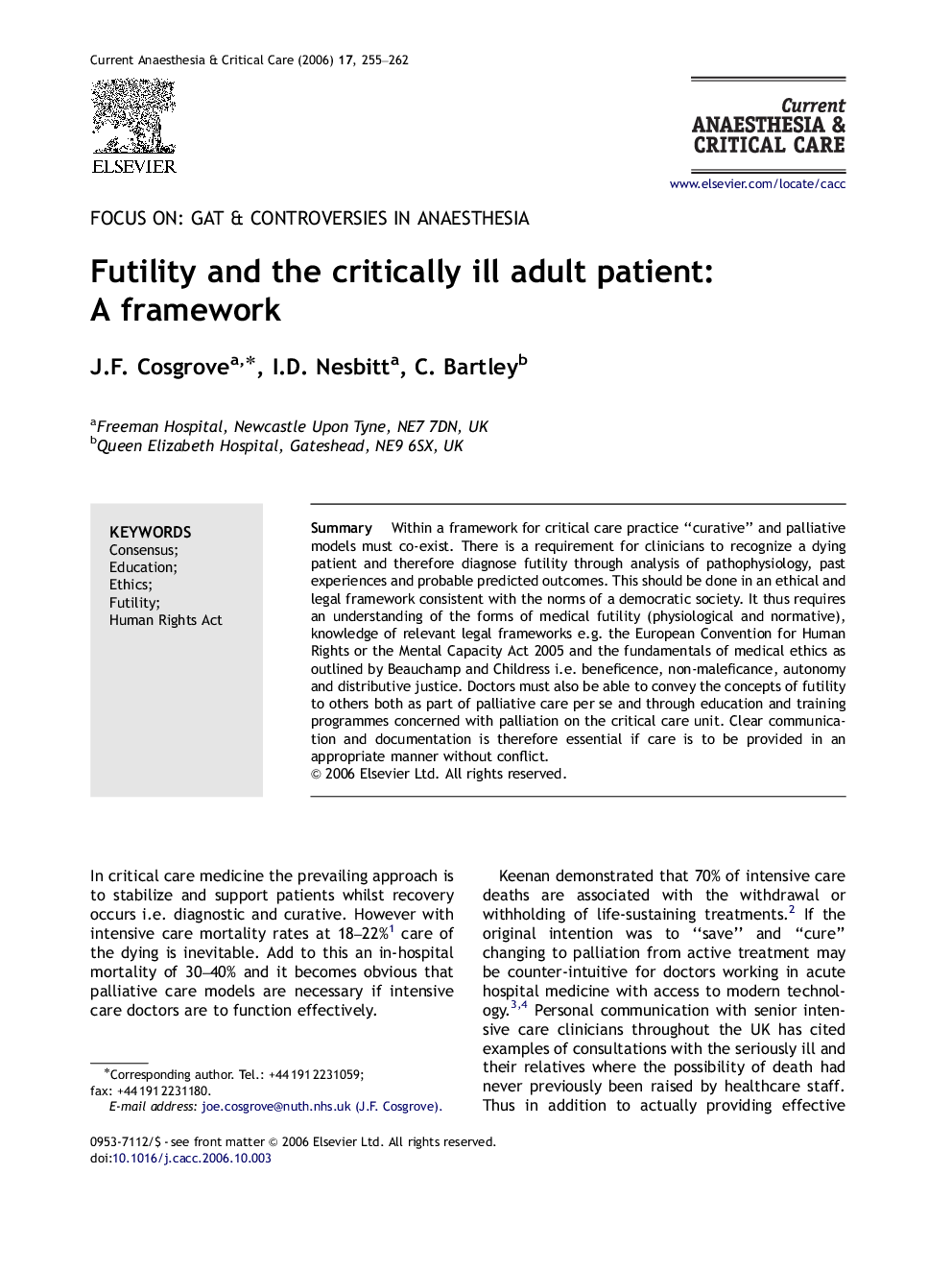| Article ID | Journal | Published Year | Pages | File Type |
|---|---|---|---|---|
| 2607891 | Current Anaesthesia & Critical Care | 2006 | 8 Pages |
SummaryWithin a framework for critical care practice “curative” and palliative models must co-exist. There is a requirement for clinicians to recognize a dying patient and therefore diagnose futility through analysis of pathophysiology, past experiences and probable predicted outcomes. This should be done in an ethical and legal framework consistent with the norms of a democratic society. It thus requires an understanding of the forms of medical futility (physiological and normative), knowledge of relevant legal frameworks e.g. the European Convention for Human Rights or the Mental Capacity Act 2005 and the fundamentals of medical ethics as outlined by Beauchamp and Childress i.e. beneficence, non-maleficance, autonomy and distributive justice. Doctors must also be able to convey the concepts of futility to others both as part of palliative care per se and through education and training programmes concerned with palliation on the critical care unit. Clear communication and documentation is therefore essential if care is to be provided in an appropriate manner without conflict.
